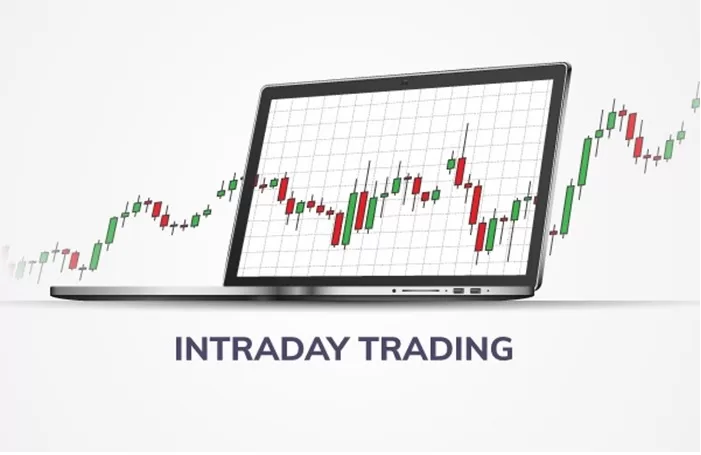Finance
What Does Intraday Trading Mean for New Investors?

For new investors entering the stock market, understanding different trading strategies is essential for success. One of the most popular methods is intraday trading, where shares are bought and sold within the same trading day. This trading style can offer quick profits, but it also comes with higher risks. Understanding the intraday trading meaning and how to utilise strategies like margin trading can help new investors navigate this fast-paced market.
What is intraday trading?
The intraday trading meaning is buying and selling stocks on the same day, with the goal of profiting from price fluctuations that occur during market hours. Unlike long-term investing, where you hold on to shares for months or years, intraday traders close all positions before the market closes.
- Same-day trades: All transactions are completed within the same trading day, meaning no shares are held overnight.
- Focus on short-term price movements: Intraday traders capitalise on small price fluctuations throughout the day.
- Frequent trades: Intraday traders typically make multiple trades a day, aiming for small, incremental profits.
How does intraday trading work?
In intraday trading, the objective is to take advantage of stock price volatility. A typical trade might involve buying a stock when its price dips in the morning and selling it when the price rises later in the day. Investors use tools like charts, technical indicators, and real-time market data to spot trends and make informed decisions.
- Choose a stock: The first step is to select stocks with high liquidity and volatility, as these are likely to see more price movements during the day.
- Set target prices: Before entering a trade, set a target price for selling. Also, establish a stop-loss level to limit losses if the trade moves against you.
- Monitor the market: Watch the market closely for opportunities to buy at lower prices and sell at higher prices. Technical analysis tools can help identify trends and price patterns.
- Close all positions by end of the day: It is crucial to close all positions before the market closes to avoid carrying risk overnight.
What is margin trading?
Margin trading is a strategy where traders borrow funds from a broker to buy more shares than they can with their available capital. It is commonly used in intraday trading, as it allows traders to amplify their potential returns. However, it also increases the risk, as losses can be magnified if the trade does not go in your favour.
How margin trading works in intraday trading:
- Leverage: By borrowing money from the broker, intraday traders can take larger positions, hoping to profit from small price movements.
- Risk management: While margin trading allows traders to increase their buying power, it is essential to use it cautiously. If the market moves against the trader, they may face significant losses, potentially leading to a margin call, where the broker asks for additional funds to cover the losses.
Key strategies for intraday trading success
For new investors, intraday trading can seem complex. However, by using some key strategies, you can reduce risk and increase your chances of making profits.
1. Start small
It is important for new investors to start with small positions when engaging in intraday trading. Focus on gaining experience and learning how the market behaves before committing large amounts of capital.
2. Use stop-loss orders
A stop-loss order is a risk management tool that automatically closes your position when the stock reaches a certain price. This helps to minimise potential losses, especially in volatile markets. Setting a stop-loss ensures you do not hold onto losing trades for too long.
3. Leverage technical analysis
Intraday traders rely heavily on technical analysis tools like moving averages, trendlines, and volume indicators. These tools help traders identify patterns and predict short-term price movements, enabling better decision-making during trading hours.
4. Limit the use of margin trading
While margin trading can enhance profits, new investors should be cautious when using it. Leverage can increase both profits and losses, so it is important to trade within your risk tolerance and avoid over-leveraging your position.
5. Trade highly liquid stocks
For intraday trading, it is best to focus on stocks with high liquidity. These stocks tend to have tight spreads (the difference between the buy and sell price), making it easier to enter and exit trades quickly without significant slippage.
Key considerations for new investors
Before engaging in intraday trading, new investors should consider several factors to ensure they are prepared for the fast-paced nature of this trading style.
1. Risk tolerance
Intraday trading is inherently riskier than long-term investing. New investors should evaluate their risk tolerance before diving into this strategy. You should be prepared to experience losses, as not all trades will result in profits.
2. Capital requirements
Many brokers have minimum capital requirements for intraday trading, especially if you plan to use margin trading. Make sure you have sufficient funds to meet these requirements and manage potential losses.
3. Time commitment
Unlike long-term investing, intraday trading requires constant monitoring of the market throughout the day. It is not a passive investment strategy, and you must be prepared to dedicate time to watch price movements and make quick decisions.
Conclusion
Understanding the intraday trading meaning and how it works with strategies like margin trading is crucial for new investors. While intraday trading offers the potential for quick profits, it also comes with higher risks. By starting small, using stop-loss orders, and being cautious with margin trading, new investors can build their confidence and gradually enhance their trading strategies.


















































